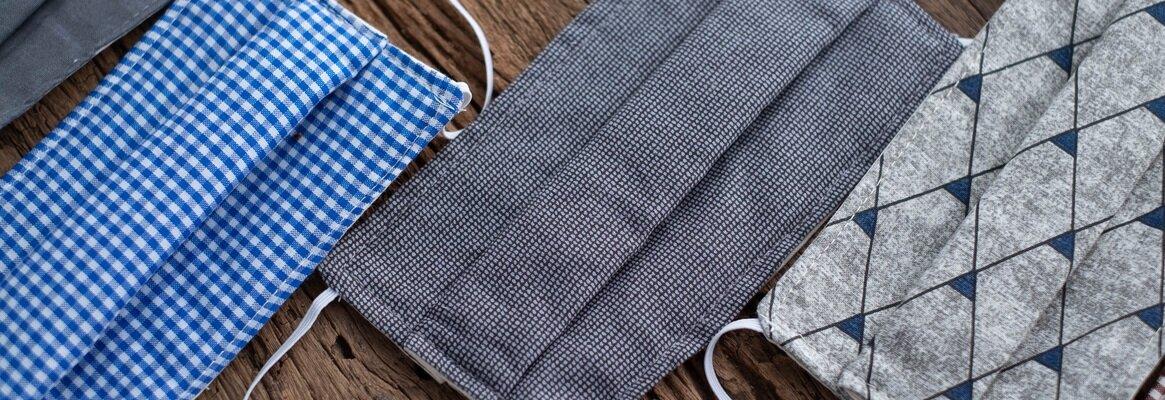India needs a huge number of overalls in its fight against the raging COVID-19. Here are some pointers on the type of how overalls can be manufactured as per guidelines suggested by Ministry of Health and Family Welfare, Government of India.
It is now clear that coronaviruses are a large family of viruses. These viruses may be specific in nature. Some may cause illness in human beings and some circulate among animals, including camels, cats and bats. Unlike MERS and SARS which spread from animal to human being, the chances of spreading of coronaviruses from animal to human beings are rare. The novel coronavirus was first noticed in seafood market in Wuhan city in Hubei province of China in mid-December of 2019, and later spread to more than 185 countries/territories worldwide including India. The novel coronavirus disease is now named COVID-19, its official name being SARS-CoV-2. This virus transmits from human-to-human. The main source of transmission is through respiratory droplets that get generated when people cough, sneeze, or exhale. Other sources of transmission are by direct touching of contaminated surfaces or objects and then touching one’s own mouth, nose, or possibly eyes.
To safeguard health workers from the COVID-19, it is required to have suitable Personal Protective Equipment (PPE), which include goggles, face-shield, mask, gloves, coverall/gowns (with or without aprons), head cover and shoe cover. Coverall/gowns are designed to protect torso of healthcare providers from exposure to the virus. It is preferable to use single use coverall. The coverall should be impermeable to blood, body fluids etc. India needs a huge quantity of such overalls.
As this is a new type of virus, there is a need to develop suitable protective fabric. As per the guidelines of WHO Disease Commodity Package (Version 4.0), the fabric that clears/passes ‘Synthetic Blood Penetration Resistance Test’ (ISO 16603) and the coverall that passes ‘Resistance to penetration by biologically contaminated solid particles (ISO 22612:2005), may be considered as the benchmark specification to manufacture coveralls. ASTM F 1670/F-1670M-08(2014) may be used to test synthetic blood penetration.
Scientists of the National Institute of Allergy and infectious Diseases (NIAID), US, working with investigators from the University of Texas at Austin (UT), identified the atomic structure of an important protein on the surface of the novel coronavirus (SARS-CoV-2, formerly called 2019-nCoV). Like other coronaviruses, SARS-CoV-2 particles are spherical and have mushroom-shaped proteins called spikes protruding from their surface, giving the particles a crown-like appearance. The spike binds and fuses to human cells, allowing the virus to gain entry. However, coronavirus infection can be prevented or slowed down if this process is disrupted.
In some literature, it is also mentioned that this virus is not a living organism, but a protein molecule (DNA) covered by protective layer of lipid (fat), which when absorbed by the cells of the ocular, nasal or buccal mucosa, change their genetic code and convert them into aggressor and multiplier cells. So it is not killed, but decay on its own. The disintegration depends on the temperature, humidity and type of material where it lies.
After going through all literature related to COVID-19, the fabric should have following properties:
-
Fabric mass should be below 100 g/m2. If the mass is high, it will not be comfortable to wear for the health workers and un-necessarily create fatigue in them.
-
The colour of the fabric should be white or light colour or sky blue. It should not be black in colour as it is awell-known fact that any contamination (like blood stain) can be visible only if the colour of the fabric is light.
-
The seams of the coverall should be sealed properly through seem sealing or taping to prevent any blood or contaminant topass through these seams.
-
It should pass the requirement of Synthetic Blood Penetration Resistance Test (ISO 16603) or equivalent
-
It should meet the requirements of resistance to penetration by biologically contaminated solid particles (ISO 22612:2005)
-
The surface of fabric should be absolutely opaque and plain as the rough surface facilitates accumulation of contaminant.
- The surface should be hydrophobic or moisture resistant as this virus requires moisture to stay stable.
Keeping the requirements in mind, it is proposed to develop COVID-19 protective coverall as per the guideline of Ministry of Health and Family Welfare, Government of India.
References:
1. https://www.mohfw.gov.in/pdf/GuidelinesonrationaluseofPersonalProtectiveEquipment.pdf
2. D. Wrapp, N Wang et al. Cryo-EM Structure of the 2019-nCoV Spike in the Prefusion Conformation. Science DOI: 10.1126/science.abb2507 (2020)
3. Yadi Zhou, Yuan Hou, Jiayu Shen,Yin Huang,William Martin & Feixiong Cheng, “ Network-based drug repurposing for novel coronavirus 2019-nCoV/SARS-CoV-2, Cell Discovery volume 6, Article number: 14 (2020)
4. Wanbo Tai, Lei He, Xiujuan Zhang, Jing Pu, Denis Voronin, Shibo Jiang, Yusen Zhou & Lanying Du, “ Characterization of the receptor-binding domain (RBD) of 2019 novel coronavirus: implication for development of RBD protein as a viral attachment inhibitor and vaccine”, Cellular & Molecular Immunology (2020).









Comments